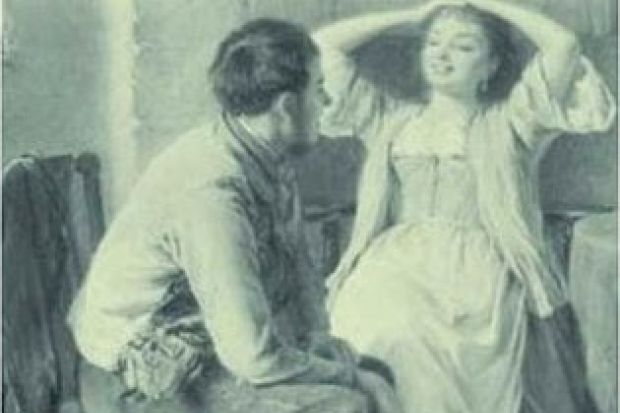Though not consigned to the upper shelves of the bookshop, the title and scarlet (well, burgundy) binding of Ginger S. Frost's Living in Sin promises a compelling and even sensational read. This is fitting, as her study of 19th-century English couples "cohabiting as husband and wife" covers much of the same territory as the sensation novel, domestic fiction and the scandal pages of the Victorian newspaper: we read of bigamy, adulterous unions, hidden second families, violence among cohabiting couples, and the children who became the victims of "the harshest bastardy law in Europe".
Frost gathers an impressive array of sources, including Foundling Hospital rejection letters, newspaper reports from across Britain, law reports and police records, to explore the practical and emotional aspects of cohabitation from the 1760s to the First World War. She examines the kinds of challenges that cohabiting couples presented to the definition of marriage in an age when many felt the institution was being dangerously eroded.
Her study reveals that most people who wanted to be together in this period wanted a marriage ritual. However, getting oneself legally bound became fraught and complicated after the Hardwicke Marriage Act of 1753. In an attempt to rid society of chaotic marriage practices, the Act made weddings possible only in very specific circumstances - so specific that any slip could render a marriage invalid, as was the case with one unsuspecting couple married by banns in 1817. The clergyman got the bride's maiden name wrong, and 13 years later the courts invalidated the union, rendering them accidental cohabitors. The repercussions for the children of such a union were serious indeed, as in England they could not be retrospectively legitimised if the couple tried again to marry.
The laws of affinity and consanguinity also led to confusion. While both the working and middle classes found certain consanguineous unions unpalatable or worse, there was a widespread discontent with the law forbidding marriage to a deceased wife's sister. Couples who flew in the face of this law of affinity often had sympathy and support from family and community.
Indeed, while divorce was so expensive and difficult to achieve, there was among the working classes a degree of understanding for cohabiting couples who had self-divorced and were living in either adulterous or bigamous unions: if the second relationship was happier and more stable than the first, there was more acceptance of it. One working woman's plight in 1904 is a good example of just how disheartening the attempt to divorce and honestly remarry could be. Married to a "violent and unfaithful" husband, she saved for three years to be able to pay for a divorce, "yet the Divorce Court refused her when they found she lived with a 'young gentleman' after she had become ill and lost her job".
Cohabitation presented many legal and emotional difficulties for those involved, and it is clear that much of the burden fell on women, especially if they had children: men and women in a free union were free to leave each other, but women were responsible for the children and often had a battle for maintenance since they had no legal claim to it. The fact that many cohabitees deemed their union a marriage in all but name led to similar expectations of their partners: Hermione Taylor was sadly mistaken, however, when she asked the police-constable father of her baby daughter for maintenance; he responded by beating her with a hammer.
Frost's excellent study is replete with skeletal narratives such as this, which leave one wanting to know more, to fill in the gaps. In her chapters focusing on adulterous couples, cross-class cohabitation, and on radical couples who chose to defy the marriage laws, she uses several instances from the personal lives of 18th and 19th-century writers. However, with the exception of a mention of Mrs Gaskell's Mary Barton, she does not take up the opportunity to use the numerous examples of cohabitation in the fiction of these and other Victorian authors. The novels of Mary Elizabeth Braddon, Wilkie Collins, Charles Dickens and Thomas Hardy take such skeletal narratives from their society and work them into the sensation novels and triple-deckers of the period.
Most cohabiting unions, according to Frost, resembled marriage in the commitment, in theory at least, to one partner over the long term. Many of these unions existed because of the difficulty in obtaining divorce, resentment over the interference of the state and, in the case of many radical unions, discontent over the law of coverture and the indissolubility of marriage. Most in free unions sought to open out the definition of marriage rather than eradicate it.
Living in Sin: Cohabiting as Husband and Wife in Nineteenth-Century England
By Ginger S. Frost
Manchester University Press
2pp
£55.00
ISBN 9780719077364
Published 1 November 2008
Register to continue
Why register?
- Registration is free and only takes a moment
- Once registered, you can read 3 articles a month
- Sign up for our newsletter
Subscribe
Or subscribe for unlimited access to:
- Unlimited access to news, views, insights & reviews
- Digital editions
- Digital access to THE’s university and college rankings analysis
Already registered or a current subscriber? Login
